
Field seminar 'Time Intercultural' in Mexico
The Mesoamerican research group 'Time in Intercultural Context: the indigenous calendars of Mexico and Guatemala' funded by the ERC and directed by prof. dr. Maarten Jansen, met up in Mexico from the 13th until the 23rd of February for a field seminar in the states of Tlaxcala and Hidalgo.
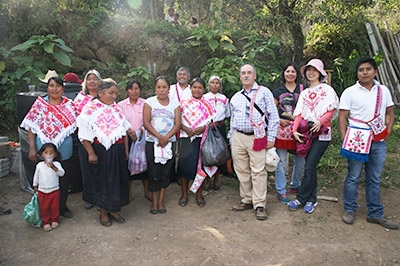
The main aim of this research group is to come to a better understanding of the Mesoamerican conceptualisation and perception of time (e.g. in ritual and symbolism) through the combined study of archaeological sites and visual culture, local archives, indigenous languages and oral traditions. The location of the field seminar was selected to make the team members familiar with several indigenous communities that PhD candidate Raul Macuil is currently working with.

Aim of the seminar was to exchange ideas and interpretations resulting from the ongoing annual fieldwork of the different team members, and to consult with indigenous experts and students. On February 18 th, for example, the team members discussed their research with Otomí, Tepehua and Nahuatl speaking students through workshops organized at the Universidad Intercultural del Estado de Hidalgo located in Tenango de Doria.
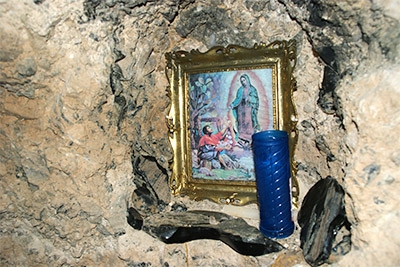
One of the highlights was the study visit to 150 hectares of obsidian mines of Cerro de las Navajas. These mines were already exploited for the extraction of obsidian cores for the production of blades, jewelry, and religious objects by the Classic civilization of Teotihuacan. Interviews at a local obsidian workshop provided good insights in the quantity, speed, and techniques of ancient obsidian blade production. A recently excavated tunnel revealed the enormous lines of volcanic glass in the soil while a collapsed ancient tunnel showed a beautiful stratigraphy that indicated that the actual ground was formed by at least half a meter of pre-Colombian obsidian debris.
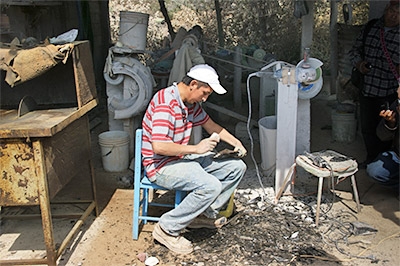
One of the highlights was the study visit to 150 hectares of obsidian mines of Cerro de las Navajas. These mines were already exploited for the extraction of obsidian cores for the production of blades, jewelry, and religious objects by the Classic civilization of Teotihuacan. Interviews at a local obsidian workshop provided good insights in the quantity, speed, and techniques of ancient obsidian blade production. A recently excavated tunnel revealed the enormous lines of volcanic glass in the soil while a collapsed ancient tunnel showed a beautiful stratigraphy that indicated that the actual ground was formed by at least half a meter of pre-Colombian obsidian debris.
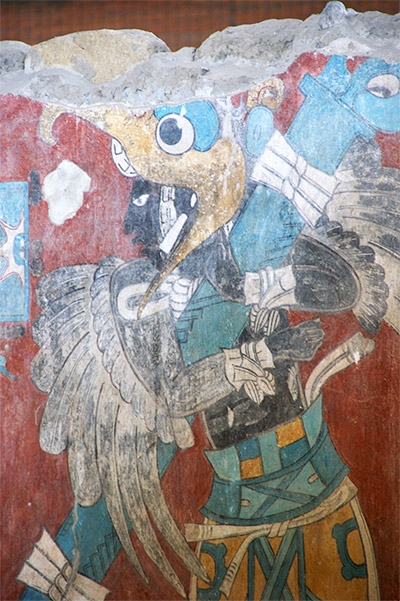
The field seminar included an intensive study of the religious processes in Mexico after 1521, particularly the synergy between the Mesoamerican religious convictions and the rituals and symbols introduced during the “spiritual conquest of the New World”. This synergy is evident in both early colonial art and in ongoing ritual practices such as offerings to Tlalticpactle, "Earth Spirit", on mountain-tops and in caves. There are clear parallels to the ancient pictorial manuscripts.

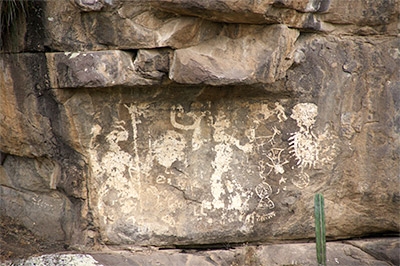
The intense, fruitful and inspiring meeting in Tlaxcala and Hidalgo finished with an exploration of the canyon at Tezoquipan, where rock paintings were analyzed in the context of an impressive sacred landscape. Afterwards the team members returned to their respective research areas, where most of them will continue their specific fieldwork during the coming months.
